Eruption and Alignment of Impacted Teeth with Multi-Purpose Attachments
A surgically exposed impacted tooth is usually brought into the arch using a bonded attachment such as a Begg bracket, a cleat or button, or a Monkey Hook.1 We have found our Multi-Purpose Attachment* (MPA) to be useful in such cases because its extremely low profile avoids gingival trauma.2 The patient also experiences less irritation to the lips, tongue, and buccal mucosa.
The MPA is a small, P-shaped bonded attachment, only .4mm thick at its base and 1mm thick at the lumen (Fig. 1A,B), with a flat base for incisors and a curved base for canines, premolars, and molars. A hook can be formed by passing a strand of ligature wire through the lumen of the MPA and twisting it (Fig. 1C).
The following case shows the attachment's use for eruption of an impacted central incisor and canine in a young patient.
Similar articles from the archive:

Fig. 1 Multi-Purpose Attachment (MPA) front and profile views (A) compared with standard brackets (B); MPA with hook formed from twisted ligature wire (C).
Case Report
A 9-year-old female presented with an unerupted maxillary right central incisor (Fig. 2). On clinical examination, the incisal edge was palpable in the vestibule. Radiographs confirmed that the tooth was oriented horizontally in the anteroposterior direction, at a distance of 18mm from the occlusal plane, thus classifying it as severely impacted.3 The maxillary right permanent canine was also impacted above the root of the lateral incisor.
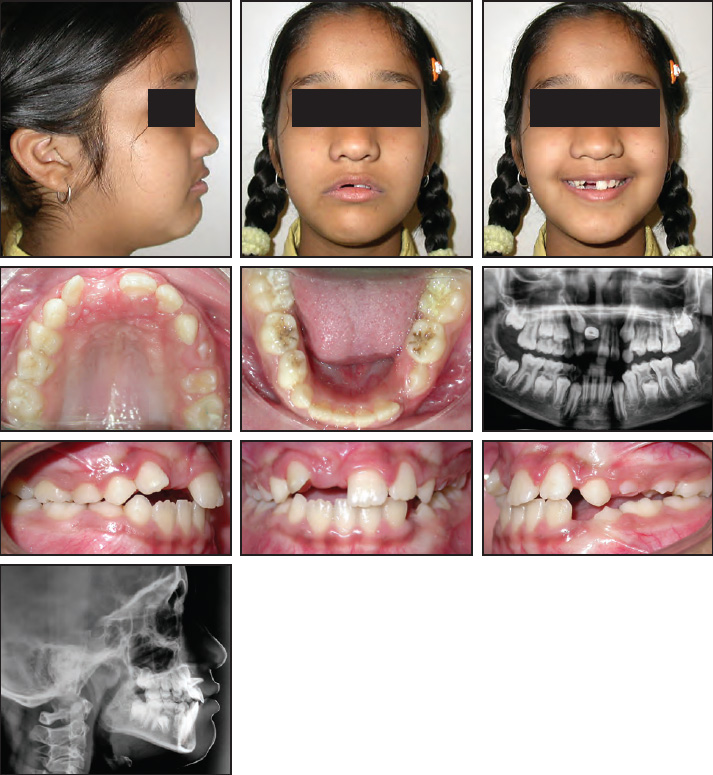
Fig. 2 9-year-old female patient with impacted maxillary right central incisor and canine before treatment.
Prior to surgical exposure of the impacted teeth, brackets were bonded to the three upper incisors and MPAs were bonded to the upper first molars. The crowns of the two impacted teeth were surgically exposed, and MPAs with ligature-wire hooks were bonded to the palatal surface of the central incisor and the labial surface of the canine. The flap was sutured closed. After seven days of healing, the hook on the maxillary right central incisor was tied loosely to the .016" nickel titanium archwire (Fig. 3). Four weeks later, the tie was activated (Fig. 4).
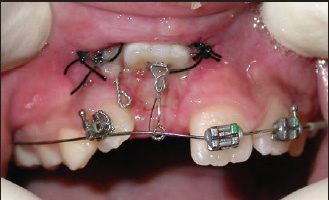
Fig. 3 MPAs with hooks bonded to impacted teeth; central incisor MPA tied loosely to archwire.
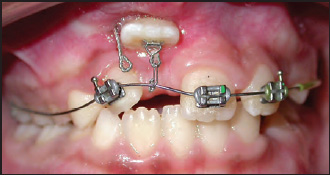
Fig. 4 After one month of treatment, ligature tie activated to begin incisor extrusion.
As the tooth moved incisally over the following five months, the labial surface was increasingly exposed. Instead of a conventional bracket, a new MPA was bonded to avoid laceration of the labial mucosa (Fig. 5).

Fig. 5 After six months of treatment, new MPA bonded to labial surface of right central incisor.
Eight weeks later, an upper .016" stainless steel wire was placed, and the canine MPA hook was tied to the upper right first molar's MPA to begin eruption of the canine. An open-coil spring was placed on the maxillary archwire between the right lateral incisor and the right first molar MPA to open adequate space for the canine.
After seven more weeks, the right central incisor had reached a more vertical position, and a conventional twin bracket was bonded. A bracket was also bonded to the right first premolar, and the canine MPA's ligature-wire hook was attached to the first premolar bracket. An open-coil spring was placed on the maxillary archwire between the right lateral incisor and first premolar brackets. During traction of the upper canine, MPAs were bonded to the lower teeth to avoid occlusal interference from the deep bite (Fig. 6).

Fig. 6 After 10 months of treatment, conventional bracket bonded to right central incisor; MPAs bonded in lower arch to avoid occlusal interference during canine retraction.
After nine months, the canine had erupted sufficiently for bonding of a conventional bracket. Four weeks later, the mandibular MPAs were replaced with conventional brackets and tubes for the finishing phase (Fig. 7).

Fig. 7 After 20 months of treatment, conventional brackets bonded to remaining teeth for finishing.
Total treatment time was 43 months. After appliance removal, upper and lower direct-bonded lingual retainers were placed using MPAs, as described in a previous article4 (Fig. 8).
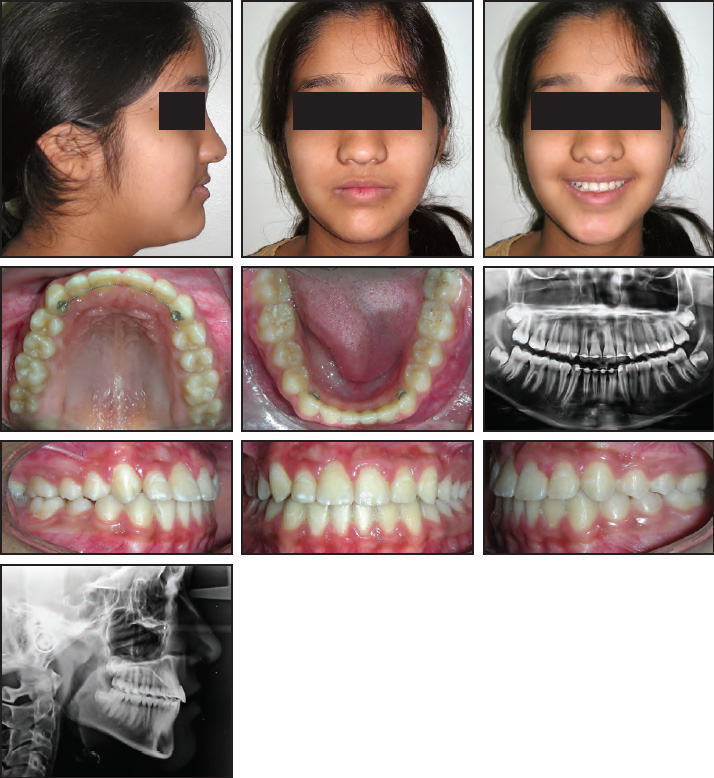
Fig. 8 Patient after 43 months of treatment, with lingual retainers bonded to MPAs on canines.4
Discussion
The MPA can be bonded with the lumen oriented to the incisal if there is no chance of occlusal interference from the opposing tooth. Normally, the lumen should be positioned gingivally and the attachment bonded as occlusally as possible. The height of the attachment can also be reduced as needed.
A light main archwire--.014" or .016" nickel titanium, or even .014" stainless steel after initial leveling and alignment--can be threaded through MPAs on the canines and posterior teeth when needed for two-dimensional control. Once the arch has been adequately leveled and aligned, a light wire (particularly nickel titanium) may be able to pass through MPAs on all teeth in the arch. Otherwise, for leveling and alignment of a single tooth, one end of a section of ligature wire is threaded through the lumen of the MPA, passed behind the archwire, brought back and twisted tightly around the other wire end, cut, and tucked in (Fig. 9A). A "double tie" is more useful for rotation and uprighting of a tooth: one end of a section of ligature wire is threaded through the lumen of the MPA, passed over the archwire, and then threaded back through the lumen; the loop over the archwire is tightened, and the two ligature wire ends are firmly twisted over the archwire at the opposite end of the lumen, cut, and tucked in (Fig. 9B).
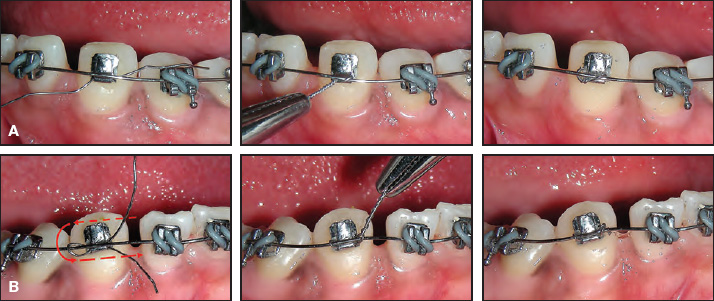
Fig. 9 Single-tie (A) and double-tie (B) methods for ligating MPA to archwire.
Conclusion
The versatile Multi-Purpose Attachment is ideal in situations where it is difficult to bond a bracket or a tube due to occlusal interference or potential trauma to the oral tissues. We have used MPAs for such widely varying problems as deep bites, crossbites, rotations, high labially placed teeth, peg teeth, and small clinical crowns. We have successfully uprighted impacted and mesially tipped second molars and corrected second-molar crossbites with MPAs, and we have adapted them as labial or lingual appliances with two-dimensional control. Finally, they are highly useful for placing bonded lingual retainers.4
FOOTNOTES
- *Braces Ideas, 2/13, Madhav Nagar, S.V. Road, Andheri (West), Mumbai 400058, India; www.bracesideas.com.
REFERENCES
- 1. Bowman, S.J. and Carano, A.: The Monkey Hook: An auxiliary for impacted, rotated, and displaced teeth, J. Clin. Orthod. 36:375-378, 2002.
- 2. Vashi, N.S. and Vashi, B.N.: A multipurpose attachment (MPA), J. Ind. Orthod. Soc. 35:89-93, 2002.
- 3. Vermette, M.E.; Kokich, V.G.; and Kennedy, D.B.: Uncovering labially impacted teeth: Apically positioned flap and closed eruption techniques, Angle Orthod. 65:23-34, 1995.
- 4. Vashi, N. and Vashi, B.: Multi-Purpose Attachment for direct-bonded lingual retainers, J. Clin. Orthod. 44:550-551, 2010.



